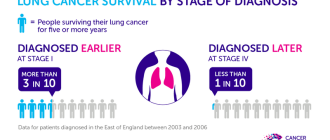 Exploring Different Treatment Options for Celiac Artery Stenosis: A Comprehensive Guide
Exploring Different Treatment Options for Celiac Artery Stenosis: A Comprehensive Guide
Celiac artery stenosis is a condition characterized by the narrowing or blockage of the celiac artery, which supplies blood to the stomach, liver, spleen, and other abdominal organs. This condition can lead to serious complications, such as abdominal pain, weight loss, and malnutrition. Therefore, it is crucial to consider treatment options for celiac artery stenosis to improve the patient’s quality of life.
One of the treatment options for celiac artery stenosis is angioplasty. During this procedure, a small balloon is inserted into the narrowed artery and inflated to widen the passage and improve blood flow. Angioplasty is a minimally invasive procedure that can be performed under local anesthesia, and it has shown promising results in relieving symptoms and improving blood flow in patients with celiac artery stenosis.
Another treatment option for celiac artery stenosis is bypass surgery. This surgical procedure involves creating a new pathway for blood flow by using a graft to bypass the narrowed or blocked section of the celiac artery. Bypass surgery is a more invasive procedure compared to angioplasty, but it may be necessary for patients with severe stenosis or those who do not respond well to angioplasty.
In some cases, medication may be used as a treatment option for celiac artery stenosis. Medications, such as blood thinners or antiplatelet drugs, can help prevent blood clot formation and improve blood flow in the affected artery. However, medication alone may not be sufficient to treat severe cases of celiac artery stenosis and may be used in combination with other treatment options.
It is important to note that the choice of treatment for celiac artery stenosis depends on various factors, including the severity of the stenosis, the patient’s overall health, and the presence of other medical conditions. A thorough evaluation by a healthcare professional is necessary to determine the most appropriate treatment plan for each individual. Early diagnosis and prompt treatment can help prevent complications and improve the prognosis for patients with celiac artery stenosis.
Is celiac artery stenosis treatment?
Celiac artery stenosis, also known as celiac artery occlusion, is a condition characterized by the narrowing or blockage of the celiac artery, which is responsible for supplying blood to the stomach, liver, and spleen. This condition can lead to various symptoms, such as abdominal pain, weight loss, and digestive issues.
The treatment options for celiac artery stenosis depend on the severity of the condition and the symptoms experienced by the patient. In some cases, conservative management may be recommended, which includes lifestyle modifications and medication to control the symptoms. However, in more severe cases, interventional procedures or surgery may be necessary to restore blood flow to the affected organs.
One of the common interventional procedures used for celiac artery stenosis is angioplasty. During this procedure, a catheter is inserted into the affected artery, and a balloon is inflated to widen the narrowed area. In some cases, a stent may also be placed to keep the artery open and prevent further narrowing.
In more severe cases or when angioplasty is not feasible, surgical intervention may be required. This can involve bypass surgery, where a graft is used to reroute blood flow around the blocked area, or endarterectomy, where the plaque causing the blockage is removed.
It is important to note that the choice of treatment for celiac artery stenosis should be individualized based on the patient’s specific condition and overall health. A thorough evaluation by a vascular specialist is necessary to determine the most appropriate treatment approach.
| Treatment Options | Advantages | Disadvantages |
|---|---|---|
| Conservative management | – Non-invasive – Can control symptoms |
– May not be effective in severe cases – Symptoms may persist |
| Angioplasty | – Minimally invasive – Restores blood flow |
– May require repeat procedures – Risk of complications |
| Surgery | – Can provide long-term relief – Fixes underlying problem |
– Invasive procedure – Longer recovery time |
Celiac artery stenosis can be treated through various approaches, including conservative management, angioplasty, or surgery. The choice of treatment depends on the severity of the condition and the individual patient’s needs. Consulting with a vascular specialist is crucial to determine the most suitable treatment option for each patient.
Angioplasty and stenting can widen a narrowed celiac artery
Angioplasty and stenting are minimally invasive procedures that can be used to treat celiac artery stenosis, a condition in which the celiac artery becomes narrowed or blocked. This condition can lead to a decrease in blood flow to the organs supplied by the artery, including the liver, stomach, and spleen.
During angioplasty, a thin tube called a catheter is inserted into a blood vessel in the groin or arm and threaded up to the celiac artery. A small balloon is then inflated at the site of the narrowing, which helps to widen the artery and improve blood flow. In some cases, a stent may also be inserted to help keep the artery open.
Angioplasty and stenting are often performed as a first-line treatment for celiac artery stenosis, as they are less invasive than surgery and can be performed on an outpatient basis. The procedures are typically safe and effective, with high success rates in improving blood flow to the affected organs.
After the procedure, patients may experience some mild discomfort or bruising at the insertion site, but this usually resolves quickly. It is important for patients to follow any post-procedure instructions provided by their healthcare team, including taking any prescribed medications and avoiding strenuous activities for a certain period of time.
Angioplasty and stenting are effective options for widening a narrowed celiac artery and improving blood flow to the affected organs. These procedures are minimally invasive, safe, and have high success rates, making them a favorable treatment choice for patients with celiac artery stenosis.
Endarterectomy surgically removes plaque from the artery
Endarterectomy is a surgical procedure that is commonly used to remove plaque from the celiac artery in order to treat celiac artery stenosis. This procedure involves making an incision in the artery and carefully removing the plaque buildup, which can help to restore normal blood flow.
This procedure is typically performed under general anesthesia, meaning the patient is asleep during the surgery. The surgeon will make an incision in the abdomen to access the celiac artery and carefully remove the plaque using specialized surgical instruments.
Endarterectomy is often recommended for patients with severe celiac artery stenosis that is causing significant symptoms or affecting the blood supply to vital organs such as the liver and spleen. By removing the plaque, this procedure can help to improve blood flow and alleviate symptoms such as abdominal pain, nausea, and weight loss.
After the procedure, patients will typically stay in the hospital for a few days to recover. They may be prescribed medications to help manage pain and prevent infection. It is important for patients to follow their surgeon’s instructions for post-operative care and attend any follow-up appointments.
While endarterectomy can be an effective treatment option for celiac artery stenosis, it is important to note that it is a surgical procedure and carries some risks. These risks can include bleeding, infection, damage to surrounding structures, and the possibility of the artery becoming narrowed again in the future.
Overall, endarterectomy is a valuable surgical option for patients with celiac artery stenosis who are experiencing symptoms or have reduced blood flow to vital organs. It can help to improve blood flow and alleviate symptoms, allowing patients to resume their normal activities and improve their quality of life.
Bypass grafting uses a vessel to redirect blood flow
Bypass grafting is a surgical procedure that is used to treat celiac artery stenosis. It involves using a healthy blood vessel from another part of the body to create a new pathway for blood to flow around the narrowed or blocked celiac artery.
During the procedure, a surgeon will make an incision and harvest a blood vessel, typically from the patient’s leg or arm. This vessel, known as a graft, is then carefully attached to the aorta and the affected artery below the blockage. The blood is rerouted through the graft, bypassing the stenotic area and restoring proper blood flow to the organs supplied by the celiac artery.
The graft used in bypass surgery can be a vein or an artery. Veins, such as the saphenous vein in the leg, are commonly used as they are easily accessible and have suitable characteristics for grafting. Arteries, such as the radial artery in the arm, may also be used when available, as they provide a more durable and long-lasting conduit.
Bypass grafting is a highly effective treatment option for celiac artery stenosis, as it directly addresses the underlying blockage and restores blood flow to the affected organs. It can relieve symptoms such as abdominal pain, nausea, and vomiting, and improve overall quality of life for individuals with this condition.
As with any surgical procedure, bypass grafting carries some risks, including infection, bleeding, and graft failure. However, with advancements in surgical techniques and careful patient selection, the success rates for bypass grafting have significantly improved in recent years.
Overall, bypass grafting offers a reliable and effective solution for individuals with celiac artery stenosis, providing them with a renewed ability to lead a healthy and active life.
Medications help control high blood pressure
High blood pressure, or hypertension, is a common condition that affects millions of people worldwide. If left untreated, it can lead to serious health problems such as heart disease, stroke, and kidney damage. Fortunately, there are several medications available to help control high blood pressure and reduce the risk of these complications.
There are different types of medications that can be used to treat high blood pressure. Some of the most common ones include:
- Diuretics: These medications help your body get rid of excess water and salt, which can lower your blood pressure.
- Angiotensin-converting enzyme (ACE) inhibitors: These medications relax blood vessels and lower blood pressure by blocking the production of a hormone called angiotensin II.
- Angiotensin II receptor blockers (ARBs): Similar to ACE inhibitors, ARBs also block the action of angiotensin II, helping to relax blood vessels and lower blood pressure.
- Calcium channel blockers: These medications help relax and widen blood vessels by blocking the entry of calcium into the cells of the heart and blood vessels.
- Beta blockers: These medications reduce the workload on the heart and help lower blood pressure by blocking the effects of adrenaline.
It’s important to note that everyone responds differently to medications, so your doctor may need to try different types or combinations of medications to find what works best for you. It’s also important to take your medications as prescribed and to discuss any side effects or concerns with your doctor.
In addition to medications, making lifestyle changes can also help control high blood pressure. These may include adopting a healthy diet, exercising regularly, reducing stress, and avoiding tobacco and excessive alcohol consumption.
If you have been diagnosed with high blood pressure, it’s important to work closely with your healthcare team to develop a treatment plan that is tailored to your individual needs. By effectively managing your blood pressure, you can reduce your risk of complications and improve your overall health and well-being.
Treatment aims to preserve or restore blood flow
The treatment options for celiac artery stenosis are focused on preserving or restoring blood flow to the affected area. Depending on the severity of the stenosis and the symptoms experienced by the patient, different treatment approaches can be considered.
In cases of mild stenosis or asymptomatic patients, conservative management may be recommended. This typically involves close monitoring of the condition and lifestyle modifications, such as adopting a gluten-free diet. Regular follow-up appointments and imaging tests may be conducted to assess the progression of the stenosis and determine if further intervention is necessary.
For patients with moderate to severe stenosis or those experiencing symptoms such as abdominal pain, weight loss, or malnutrition, more invasive treatment options may be necessary. One such option is angioplasty, a procedure in which a balloon-tipped catheter is inserted into the celiac artery and inflated to widen the narrowed area. This helps to improve blood flow and alleviate symptoms.
In some cases, a stent may be placed during angioplasty to help keep the artery open. A stent is a small, mesh-like tube that is inserted into the artery to provide support and prevent future narrowing. This can help to maintain blood flow and reduce the risk of further complications.
In more severe cases of celiac artery stenosis, surgical intervention may be required. This can involve bypass surgery, in which a graft is used to redirect blood flow around the narrowed area of the artery. Another option is endarterectomy, a procedure in which the plaque buildup causing the stenosis is surgically removed to restore blood flow.
Ultimately, the choice of treatment depends on the individual patient’s condition and symptoms. It is important to consult with a healthcare professional to determine the most appropriate treatment plan for celiac artery stenosis.
Question-answer:
What is celiac artery stenosis?
Celiac artery stenosis is a condition characterized by the narrowing of the celiac artery, which is responsible for supplying blood to the stomach, liver, and spleen.
What are the symptoms of celiac artery stenosis?
The symptoms of celiac artery stenosis can vary, but common symptoms include abdominal pain after eating, weight loss, nausea, vomiting, and diarrhea.
How is celiac artery stenosis diagnosed?
Celiac artery stenosis can be diagnosed through various imaging tests, such as ultrasound, CT angiography, or magnetic resonance angiography. These tests can help visualize the narrowing of the celiac artery and assess blood flow.
What are the treatment options for celiac artery stenosis?
The treatment options for celiac artery stenosis depend on the severity of the condition. In mild cases, lifestyle changes such as adopting a healthy diet and quitting smoking may be recommended. In more severe cases, surgical procedures such as angioplasty or bypass surgery may be necessary to restore blood flow to the affected area.
Can celiac artery stenosis be cured?
Celiac artery stenosis cannot be completely cured, but it can be managed effectively with proper treatment. With the appropriate lifestyle changes and medical interventions, the symptoms of celiac artery stenosis can be improved, and the risk of complications can be reduced.
What is celiac artery stenosis?
Celiac artery stenosis is a condition where there is a narrowing or blockage in the celiac artery, which is responsible for supplying blood to the stomach, liver, and spleen.
What are the symptoms of celiac artery stenosis?
The symptoms of celiac artery stenosis can vary, but common symptoms include abdominal pain after eating, weight loss, nausea, vomiting, and diarrhea.
What are the treatment options for celiac artery stenosis?
The treatment options for celiac artery stenosis depend on the severity of the condition. Mild cases may be managed with medications to control symptoms, while more severe cases may require surgery to bypass or remove the blockage in the artery.





